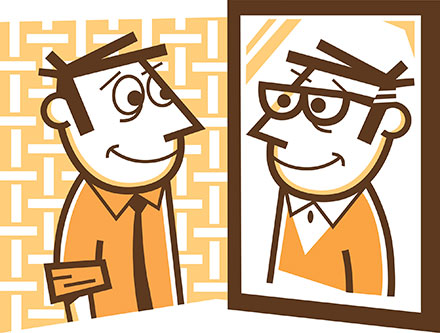What Can Design Thinking Do for Me?
What this buzzword means and how it can benefit your next project.

Design thinking is a term that is getting a lot of buzz lately in the business world. What exactly is it? And why should you care?
Design thinking is a new way to talk about the process illustrators, graphic designers, product designers, architects, and other creative professionals have been using for years. It’s business-speak jargon but it has real utility in solving business (and social) problems, if used correctly.
Let’s start by identifying some of design thinking’s characteristics:
- It questions the problem. To start this process you must go back to the beginning and make sure you are trying to solve the right problem. Do you need a faster horse or do you need to invent a car? Once you know you are addressing the right issue, you can start looking at potential solutions.
- It’s empathic. Design thinking examines the needs of the user, whether through imagination, questioning, or direct observation. You have to put yourself in the mindset of your audience and identify their pain and gain points before you can create something they want.
- It’s collaborative. This process works best when multiple people are working together. Different frames of reference will come up with different solutions. And a team can turn one person’s spark of an idea into a fully-functioning concept.
- It’s iterative. Design thinking requires trying things out, testing them, and refining them to make them better. There will be multiple rounds of concepting until you get to a solution ready for launch. Then you keep testing and improving with the feedback from a changing marketplace.
Ok, now why should you employ it? Here are some of the benefits you’ll see if you use it in your next project:
- You’ll get the skeletons out of your closet. By reexamining the problem you are trying to solve, you may discover the reason you can’t sell your product is that you have a bad product. Going back to the source will save you time and expense in trying to put lipstick on that hog.
- It will bring your team together. How often does your sales team get together with your R&D team? Does the operations department know what HR is working on? Coming together to solve a problem can open eyes and change minds. By hearing someone else’s concerns first-hand your team members can start to empathize.
- You’ll save and make money. If you do research, testing, and reevaluation throughout the process you won’t be stabbing in the dark with product development or marketing. You’ll know the results of your efforts and know where to invest in your company
- You’ll have a plan to move forward. A good design-thinking process should end with the deliverable of a plan. Which of the hundreds of ideas are you able to implement? Which ones will be most effective? Who’s responsible for making it happen? What’s the deadline? All of this has to be determined or you will have wasted the entire process.
Design thinking can’t solve all of your business problems. Business is much more complicated than that. But it can provide a methodical framework for addressing issues as they arise.
Does Your Brand Reflect Your Business?
Don’t let your brand fall behind.
Brainstorming without Homework = Incomplete
Don’t forget to hit the books for your next brainstorming session.
Better Questions Lead to Better Ideas
Are you asking the right questions in your brainstorming sessions?



